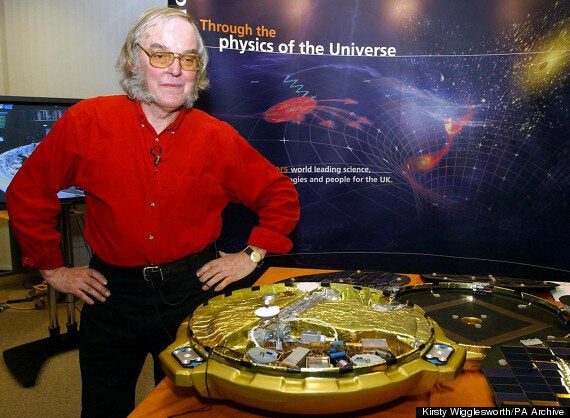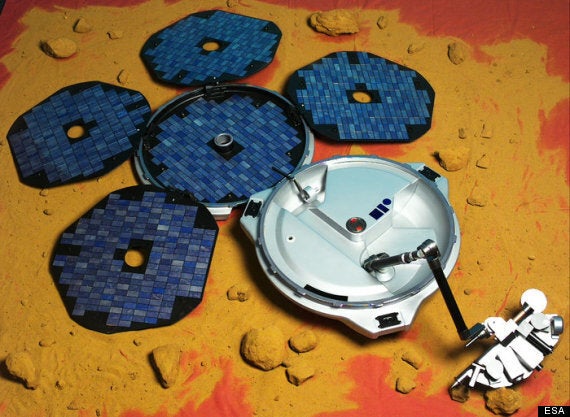The UK Space Agency has announced a media briefing for an "update" on Beagle 2 - the British space craft which tried and failed to make a soft landing on Mars in 2003.
Beagle 2 was part of the European Space Agency's Mars Express mission, and was intended to report back from the surface of the Red Planet with a variety of instruments designed to help search for life.
The robot garnered huge attention in the British media at the time - partly due to the brilliance and energy of Prof. Colin Pillinger, the leader of the Beagle 2 mission and its most iconic supporter, who died in 2014.

Above: Pillinger with a model of Beagle 2
But while the lander was successfully released by Mars Express on 19 December, it did not report back to Earth following its landing attempt on Christmas Day. A report into the landing followed, and was made public in 2005 - though it remains subject to debate what actually caused Beagle 2 to fail. Prof Pillinger reported in 2005 that he may have spotted the lander in a crater, but subsequent images of the area seemed to dispute that.
"Nothing has been heard from Beagle 2 since," the UK Space Agency said.
The official Beagle 2 website has also been silent for more than 10 years - with its last update congratulating NASA on the landing of its own Opportunity rover.
Now the UK Space Agency has called a "media briefing" for Friday 16 January for an "update" on the lander.
It is not known what will be discussed, but it is thought that data or evidence as to what happened to it might be shown, or perhaps details on some new, related mission.
Inevitably, speculation will bubble up that the lander may have been found - though that seems very unlikely.
Speakers at the event will include Dr David Parker from the UK Space Agency, and Professor Alvaro Gimenez, Director of Science and Robotic Exploration at ESA.
Whatever the news, Beagle 2 remains an iconic failure in the history of British space exploration.
Lord Martin Rees, the Astronomer Royal, paid tribute to Prof. Pillinger and the £50 million mission on the scientist's death last year:
"This was a failure, but a heroic failure. Several far more expensive and elaborate Mars missions failed, and he deserves huge admiration for the way he cobbled together the funds for this project against all the odds, inspiring interest and enthusiasm along the way."

How Beagle 2 Would Have Worked (Via ESA)
"First, solar panels would unfold: they catch sunlight to charge the batteries which would power the lander and its experiments throughout the mission. Next, a robotic arm would spring to life.
Attached to the end of the arm was the Beagle's Payload Adjustable Workbench (PAW) where most of the experiments were situated. These included a pair of stereo cameras, a microscope, two types of spectrometer (Mössbauer and X-ray) and a torch to illuminate surfaces. The PAW also housed the corer/grinder and 'the mole', two instruments for collecting rock and soil samples for analysis.
The robotic arm would have stretched and rotated to give the two stereo cameras a good panoramic view of the landing site. When a suitable rock was chosen, the PAW would rotate until the grinder was in position to grind away the weathered surface.
When a rock looked particularly interesting, a sample would have been drilled out with the corer and taken to the gas analysis package (GAP) inside the shell of the lander by means of the robotic arm. 'The mole', carried on the back of the PAW, would also collect soil samples and return them to the GAP."